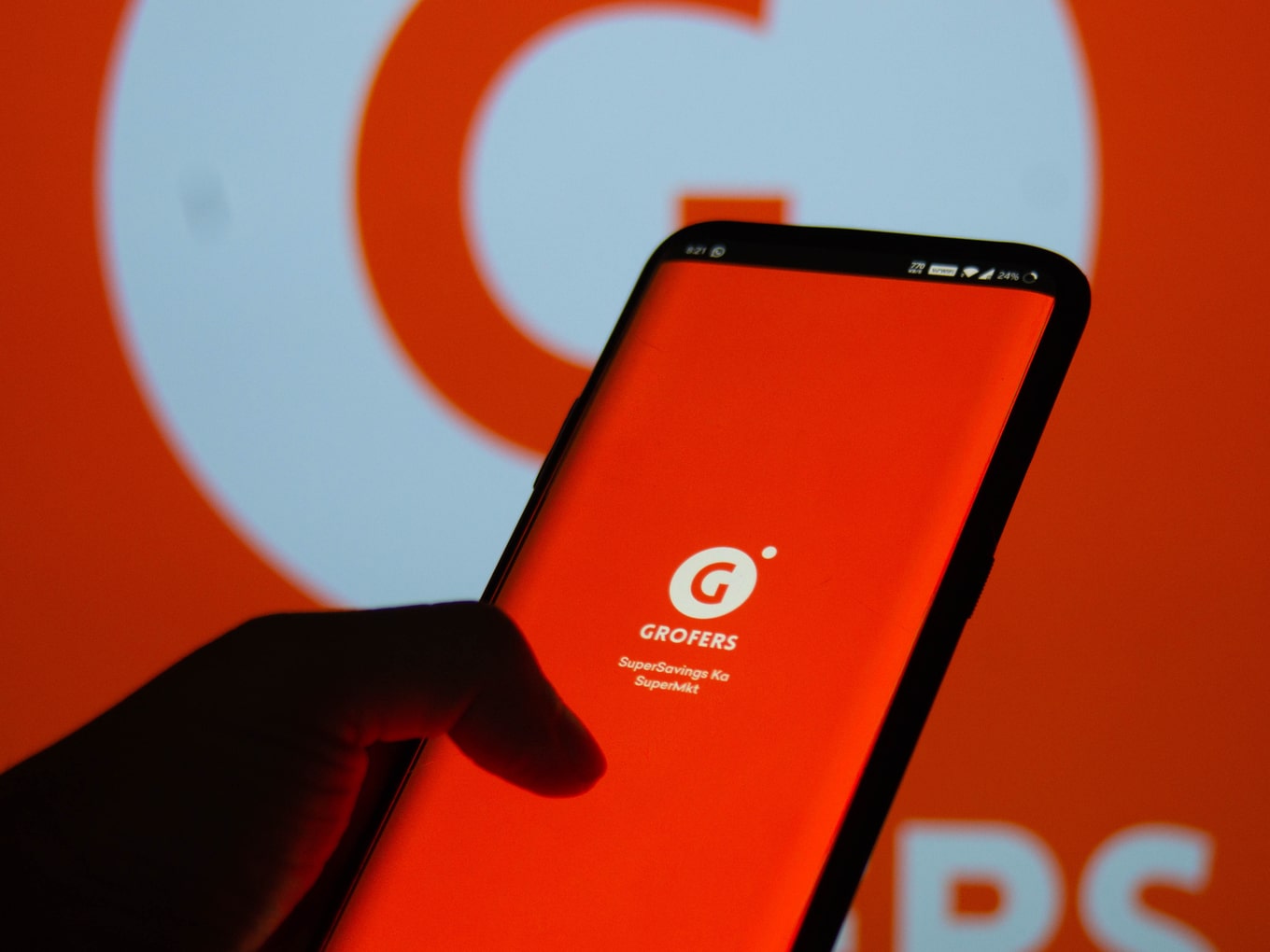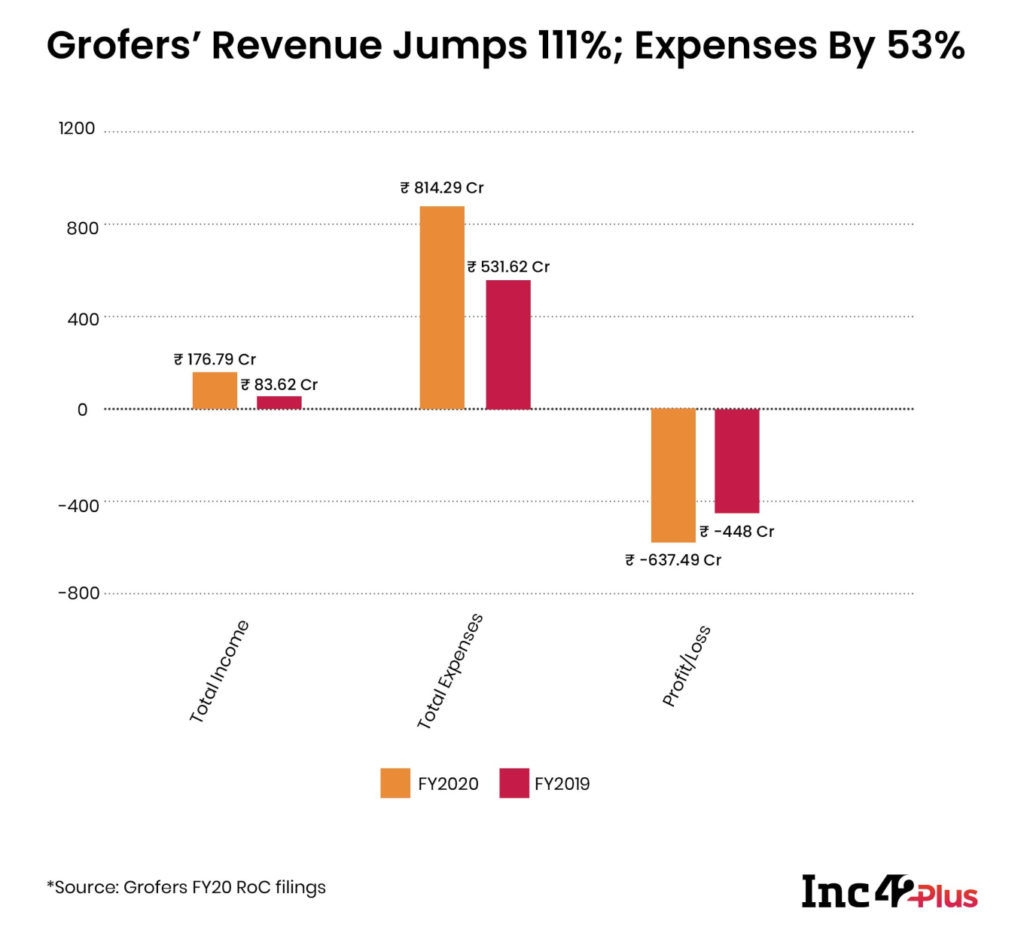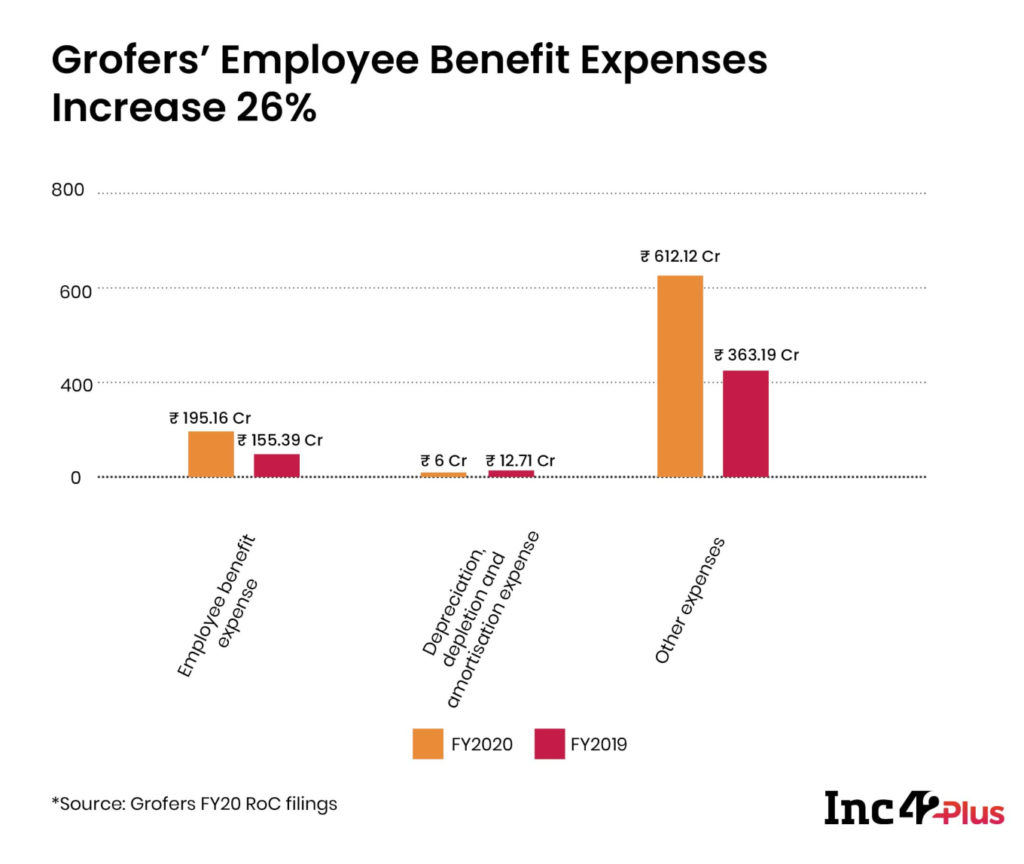
Numbers-wise, it would perhaps be unfair to compare Grofers with its main competitor in the online grocery space BigBasket. Grofers’ total revenue in the fiscal year ended March 31, 2020 (FY20) stood at INR 176.79 Cr, with losses growing 42% to INR 637.49 Cr. This pales in comparison to BigBasket’s revenue of INR 3,818 Cr for the year and highlights the much larger scale of the Bengaluru-based online grocery unicorn.
The financial performance for both companies shows just how brutal the online grocery business can prove to be for unit economics, even for seasoned players. While BigBasket has entered its tenth year of operations, Grofers will turn eight this year, according to data from Crunchbase. So while Grofers is slightly behind on the trajectory, we expect the company to catch up to BigBasket’s scale in a couple of fiscals.
For FY20, Grofers’ operational revenue stood at INR 165.27 Cr, while income from other sources, which includes interest on fixed deposits and current investments, stood at INR 11.51 Cr.
Both companies have exhibited a similar year-on-year (YoY) growth in revenue. For Grofers, the revenue grew 111% YoY to over INR 176 Cr from INR 83.62 Cr in FY2019. For BigBasket too, given the massive scale of the business, revenue grew by a healthy 36%.

And the similarities don’t end there.
They also saw similar growth in expenses in FY20. Grofers’ total expenses increased by 53% YoY from INR 531.62 Cr in FY19 to INR 814.29 Cr in FY20. For BigBasket, expenses grew by 31% to INR 4,411 Cr in FY20.
The growth in expenses for both companies offset their healthy growth in revenue, translating to heavier losses for both. Grofers’ loss for the year grew 42%, while for Bengaluru-based BigBasket, the losses widened by 26% to INR 710 Cr.
Notably, Grofers’ loss had risen 56% in FY19, while that for BigBasket had multiplied nearly 2x.
In FY20, Grofers spent INR 4.6 for every rupee earned, while this ratio was around INR 6.3 in the previous year. This highlights that scale can have a major impact on the grocery unit economics. The breakup of Grofers’ spending for the year shows that employee benefit expenses increased by 26% to INR 195.16 Cr.

A major spend for Grofers in the year was advertising, where costs increased 118% YoY to INR 179 Cr — depreciation, depletion and amortisation expenses decreased by 112% to INR 6 Cr; and, other expenses, which includes rent, fuel, conveyance, legal and advertising costs, increased by 69% to INR 612.12 Cr.
Post-Covid Boom For Grocery Business
It remains to be seen how exactly Grofers has grown in the past year after the lockdown was implemented. It is expected that Grofers will continue its revenue growth in FY21 as well, given that online grocery stores witnessed an uptick in new users during the Covid-19 lockdown last year, when delivery of essentials through ecommerce startups was allowed.
While BigBasket had reported a 35% increase in sales in April, Grofers registered a 60% increase in its GMV, compared to pre-Covid-19 levels. During the lockdown and subsequent months, Grofers also claimed to have on-boarded 5,000 local stores as supply partners. It also opened 23 new facilities last year to meet the increasing demand. In April last year, it was reported that Grofers would invest $50 Mn to strengthen its supply chain and private label category over the next two years.
Nevertheless, the company will need some time to break even and turn a profit, even as it looks to go for public listing later this year. Given the fact that it’s yet to turn operationally profitable, an overseas listing is a near certainty. Last month, Inc42 reported that Grofers was looking at acquisitions to carve out profitability ahead of its Initial Public Offering (IPO).
The company was reported to be evaluating ecommerce-specific products that will help improve the efficiency of supply chains as well as customer experience in the areas of product discovery or recommendations and intangible benefits such as “convenience and ease of mind”, Grofers’ CEO Albinder Dhindsa told Mint.
Private labels currently form almost 42% of its revenue, according to Dhindsa. “Our focus will remain on our customers. In 2021, we will work towards making products more affordable for customers and look at making their shopping experience better,” he added.
In November last year, Grofers was said to be in the final stages of raising $55 Mn-$60 Mn from Softbank, its largest investor, and other existing investors. Softbank has a 46% stake in the company. In 2019, Softbank led the $220 Mn Series F funding round for Grofers. In 2018, Softbank had led the $53 Mn-worth Series E round for Grofers.
A recent report from consulting firm Redseer said the total size of the e-grocery market in India was expected to grow from $1.9 Bn 2019 to $3 Bn by 2020 and may reach $18.2 Bn by 2024.
The market is expected to see increased competition in India, given the entry of major ecommerce players such as Amazon and Flipkart in the segment. Foodtech giant Swiggy is also scaling up Instamart, its instant grocery delivery service by investing into a network of dark stores.
The post [What The Financials] Grofers Revenue Climbs 111% In FY20 To Cross INR 100 Cr Mark appeared first on Inc42 Media.
0 Comments